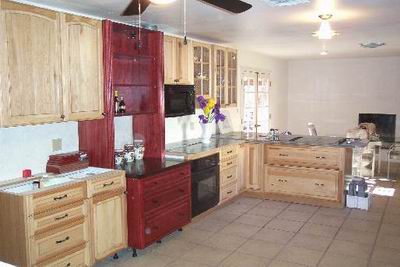by Jon Elvrum
Q.
We have had requests recently for Euro-style cabinets. We have steadfastly refused anything but face frame jobs to date but are now considering getting into 32mm in a modest way to see if it works for us. We are nervous about the investment in equipment. Can you recommend machines, etc. that we can get into for minimal cost to evaluate the system?
A.
There are several ways to approach this: first, one can enter at a "bare bones level" and suffer the pain of slow growth; or, one can organize a "package purchase" which permits a more or less immediate entry into this process, and also allows for some sustained growth before any more equipment is required. At the minimum, one must have a means of cutting melamine and MDF panels reasonably squarely. True squareness is a real issue that can be an exhaustive study in its own right. It is sufficient to know that the ability to work from a constant reference point permits errors in panel squareness to be thrust to the back of any box, where it is relatively undetectable.
Therefore, a good saw that produces a clean cut and a straight cut is the most important resource. Your space available and the volume needs are the criteria you must develop and meet. There are sliding, vertical and beam saws. Your criteria usually leads you to a decision about what meets your own needs.
Second, one needs to be able to easily and neatly band panels. This really requires an edge-bander. The good news is that there are many, and there are lots of variations, all of which can meet your developed criteria for space, volume and price. To build frameless without an edgebander is a difficult undertaking.
The third element of acceptable frameless cabinetry is drilling. To undertake this successfully, one uses a line-drilling style called system drilling. System drilling is different from conventional line drilling because it permits complete hardware utilization from the 32mm system side as a direct function of the keeping of fixed reference edges. This also works in the assembly drilling to promote a "perfect corner joinery" that is the result of pre-determined planning and measurement, and when implemented under a systematic control, cannot fail, except for gross operator error. Nothing but management oversight can prevent operator error.
The last aspect of this style of manufacture is unfortunately the most frequently ignored -- the case clamp. Case clamps are finally being understood by manufacturers as not so much about speed (although they are very quick) but are completely about a square cabinet or furniture piece resulting from the other efforts you have made--sawing, banding and drilling.
Finally, nothing beats preparation--what I call doing the front end math and changing your own viewpoint in favor of making the process successful. Neither frame or frame-less are right or wrong, but they are independently right for you or for your customer.
Jon Elvrum, Director of Distribution and Sales at Ritter Manufacturing in Antioch California, is also a well known author and consultant to the cabinetmaking industry. He has written numerous articles on the 32mm cabinetmaking system and production woodworking in general.
Comment from contributor A:
If you're just starting out, try finding component shops in your area. Invest in pre-made panel parts instead of equipment. You should have enough machinery in your shop to customize parts if need be. The only machines you may have to purchase or lease would be a hinge and drawer machine. And if you buy a resonable amount of hinges and drawer guides, Blum will usually give a discount on the machines. I have found that it is more cost effective to buy your parts cut, drilled and banded.
